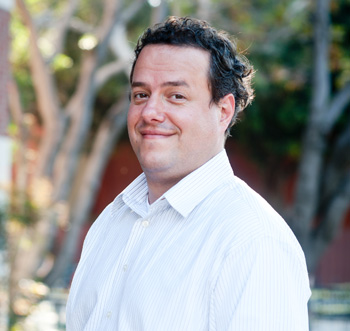
Martin Šmok
Martin Šmok was making a documentary film in the summer of 1994 about the Jewish underground movement in Slovakia during World War II when he realized that the key witnesses he needed to interview all lived far away from his home in the Czech Republic.
While looking for help, he came across the Survivors of the Shoah Visual History Foundation, then just beginning its quest to interview 50,000 Holocaust survivors and witnesses around the world. Šmok was hired as an interviewer.
Today, 19 years later, he is still with the Shoah Foundation as its Senior International Program Consultant based in the Czech Republic.
Šmok provides consultation and conducts research that relates to educational work of the USC Shoah Foundation, including drafting proposals and work plans for future educational projects, working with other staff to research, establish, and maintain relationships with existing or potential partners throughout the region, and responding to all kinds of questions about the USC Shoah Foundation.
He also runs the annual Teaching with Testimony in the 21st Century teacher education programs held throughout Europe, coordinates outreach efforts and manages the creation of regional testimony-based educational assets, such as the recently posted Born in the City that Became Auschwitz exhibit.
Šmok said the biggest challenge he faces in his work is the public’s disinterest in genocide education, which is often rooted in stereotypes and racism. In Czech Republic, the general acceptance of “vicious hatred” of the Roma minority is especially alarming, he said. However, there is hope.
“Together with local partners such as the Jewish Museum of Prague or the Institute for Formal and Applied Linguistics we have truly moved the field: the use of videotaped testimonies and digital testimony databases in education is rising, local educational partners help us with designing the most efficient methodologies, the Visual History Archive is regarded as a key resource in many fields,” Šmok said.
His most rewarding moments come when he can see that the work he has been involved with does make a difference, he said, “when I see teachers realizing how deeply embedded all kinds of stereotypes were in their thinking and their educational practice.”
Šmok’s future projects include creating new educational resources to accompany USC Shoah Foundation’s new testimony collections, as well as testimony-based resources tailored specifically for locations throughout Central and Eastern Europe.